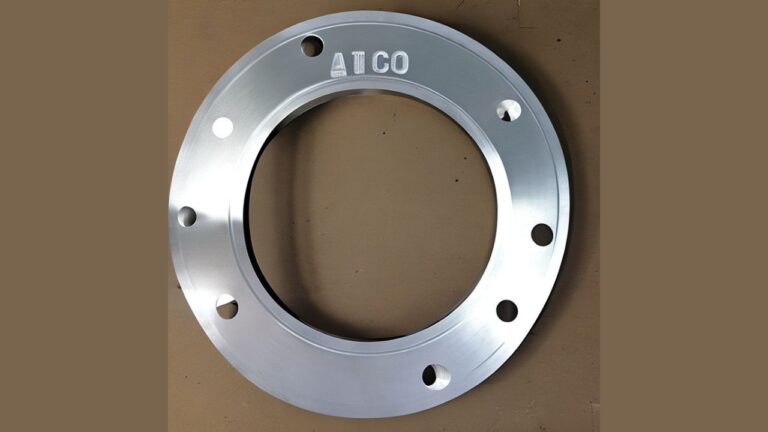A wobbly or loose toilet seat can be a frustrating problem that affects the functionality of your toilet. Tightening a toilet seat seems simple, but it can become complicated if you have no access to the underside of the seat. You can use several methods to fix this issue without any hassle.
This guide will go through the step-by-step process of tightening a toilet seat with no access underside.
Identifying the Problem
Before you start tightening the toilet seat, it is essential to identify the source of the problem.
Loose toilet seats happen due to loose bolts or worn-out hinges. First, check the bolts and nuts holding the toilet bowl seat.
If they are loose, this is likely to cause the problem. However, if the bolts and nuts are tight, the hinges are the source of the problem.
Identifying the problem source is crucial because it will help you know how to fix the loose seat.
Variety of Toilet Seats
Before tightening the toilet seat, ensure you know how to do it correctly.
Different toilet seats vary in terms of how they are attached.
You might come across five basic kinds of toilet seats:
- Top fixing toilet seats
- Bottom fixing toilet seat
- Quick-release toilet seat
- Toilet seats with plastic bolts
- Toilet seats with metallic bolts
Tightening Method
Most toilets have either a bottom-fixing or top-fixing toilet seat.
The difference is that with a bottom-fixing toilet seat, tighten by screwing in a wingnut and washer on a bolt from the underside of the toilet bowl, while one uses a screwdriver from the top side of the bowl.
Top-fixing toilets have all the seat-attaching hardware at the top of the bowl. Wingnuts to secure the seat are accessible from above, so you don’t need to lean over to tighten them.
Press a button or slide out the entire seat to tighten a quick-release seat. Then, using the mounting hardware, tighten the seat again.
Tightening a toilet seat is a simple thing that you can do yourself. The principle here is similar to tightening a bolt; you need a new nut and a wrench to complete the job correctly.
Equipment / Tools
- Flathead screwdriver
- Pliers (optional)
- Ratchet wrench with a deep socket (optional)
- Adjustable wrench (optional)
- Plastic wrench (optional)
- Protective accessories (optional)
Here is How to Tighten The Toilet Seat
If you are like most homeowners, then you have your routine when it comes to household repairs. Toilet seat repair is one of the most common household repairs.
The bolts that secure the toilet seat may become loose and make noise when sitting on them.
The toilet seats are designed to support the weight of your body comfortably and are fastened above the toilet bowl with just two bolts for easy removal.
Plastic tabs or caps cover most toilet bolts. Bolts can be found after removing the cap or tabs.
Some seats have a quick-release plastic clip; instead of a screw. This clip is used to secure the seat to the bowl’s ring.
However, the plastic clips can lose their tension over time, causing them to pop out and allowing the seat to rattle or wobble.
Method 1: Tightening the Bolts and Nuts
Tightening the bolts and nuts is the most common and straightforward method of fixing a loose toilet seat.
It is also the easiest method to perform, even if you cannot access the underside of the seat.
Here is a step-by-step guide on how to tighten the bolts and nuts:
- Start by closing the toilet seat and pressing firmly on both sides to ensure it is entirely in place.
- Use a screwdriver or a wrench to tighten the bolts and nuts that hold the seat to the toilet bowl. You can access these bolts from the top of the seat. Tighten them gently, being careful not to overtighten them as this can crack the toilet seat or bowl.
- Once you have tightened the bolts and nuts, test the seat to ensure it is secure. You can do this by sitting on the seat and rocking it gently. If the seat is still loose, try tightening the bolts and nuts more.
Method 2: Using Epoxy Resin
If the bolts and nuts are tight, the hinges are likely the problem source. Hinges wear out over time, leading to a wobbly toilet seat.
Using epoxy resin is an effective method of fixing a loose seat with worn-out hinges.
Here is a step-by-step guide on how to use epoxy resin:
- Clean the hinges and the seat to remove dirt, grease, or debris. You can use a cleaner or a cloth with soap and water.
- Apply a small amount of epoxy resin to the inside of the hinge socket. Ensure that the socket is filled with the epoxy.
- Attach the seat to the toilet bowl and firmly press it down to ensure the epoxy spreads evenly inside the socket.
- Let the epoxy cure for at least 24 hours before using the toilet. Avoid using the toilet during this time to allow the epoxy to dry completely.
Method 3: Using Rubber Washers
Another effective method of fixing a wobbly toilet seat with worn-out hinges is using rubber washers.
The rubber washers create a cushion between the hinges and the toilet bowl, making the seat more stable.
Here is a step-by-step guide on how to use rubber washers:
- Start by removing the seat from the toilet bowl. You can do this by unscrewing the bolts and nuts holding it.
- Clean the hinge sockets and the toilet bowl to remove dirt, grease, or debris.
- Place a rubber washer on top of each hinge socket.
- Reattach the seat to the toilet bowl, ensuring the rubber washers are between the hinges and the toilet bowl.
- Tighten the bolts and nuts that hold the seat in place, being careful not to overtighten them.
- Test the seat to ensure it is stable by sitting on it and rocking it gently.
Method 4: Using Wing Nuts
If you do not have access to the underside of the toilet seat, you can use wing nuts to tighten it.
Wing nuts are ideal for quick fixes as they do not require any tools and are easy to tighten or loosen.
Here is a step-by-step guide on how to use wing nuts:
- Start by locating the wing nuts on the underside of the toilet seat. They are usually found at the base of the bolts holding the seat.
- Tighten the wing nuts by hand, turning them clockwise. Use your other hand to hold the bolt to prevent it from spinning.
- Test the seat to ensure it is stable by sitting on it and rocking it gently. If the seat is still loose, tighten the wing nuts.
Method 5: Using Threaded Inserts
Threaded inserts are a more permanent solution for fixing a wobbly toilet seat with no access to the underside.
They are ideal for worn-out hinges, and the seat cannot be tightened using bolts and nuts.
Here is a step-by-step guide on how to use threaded inserts:
- Start by removing the seat from the toilet bowl. You can do this by unscrewing the bolts and nuts holding it.
- Drill a small hole through the bottom of the seat, where the hinges attach to the seat.
- Insert a threaded insert into the hole using a threaded insert tool. The tool is used to screw the insert into the hole, creating a new thread for the bolt to screw into.
- Reattach the seat to the toilet bowl using the new threads created by the threaded insert. Tighten the bolts and nuts, being careful not to overtighten them.
- Test the seat to ensure it is stable by sitting on it and rocking it gently.
Replacing a Toilet Seat With No Access to the Underside
Replacing a toilet seat with no access to the underside of the toilet seat can be challenging but possible. You need to find a suitable seat that has special fittings that can be attached from the top, such as expansion plugs or spring toggles.
These fittings go through the holes in the toilet and expand or flip to secure the seat in place. You can use a screwdriver to tighten the bolts and adjust the seat position.
You can install a new toilet seat without accessing the underside with patience and care.
Here are the main steps to replacing a toilet seat with no access underside:
- Check the toilet seat and see if it has hidden hinges or release buttons that allow you to remove it easily.
- If not, you may need a new seat with expansion plugs or spring toggles that can be fixed from above.
- Align the new seat with the holes on the toilet and insert the plugs or toggles through them.
- Use a screwdriver to tighten the bolts from above until the seat is secure.
- Adjust the seat position if needed and check for any wobbling or movement.
FAQ
A. To fix a wobbly toilet seat without tightening bolts, you can use friction pads, adhesive strips, or a toilet seat stabilizer.
A. Silicone caulk is not recommended for fixing a loose toilet seat as it may not provide a secure and durable solution.
A. A toilet seat can become loose due to worn-out bolts, damaged hinges, or an incorrect installation.
A. Checking and tightening your toilet seat at least twice a year is recommended.
A. It is not advisable to replace a toilet seat without removing the old one, as it may compromise the stability and safety of the installation.
A. Using the toilet with a loose seat is unsafe as it may cause accidents and injuries.
A. To choose the right size of a toilet seat stabilizer, measure the distance between the bolt holes and the width of the toilet seat.
A. The tools needed to tighten a toilet seat include a screwdriver, pliers, and possibly a wrench or a ratchet.
A. While glue may temporarily fix a loose toilet seat, it is not a reliable or recommended long-term solution.
Key Takeaway
- Fixing a wobbly toilet seat with no access to the underside is a simple task that requires a little effort and time.
- Identifying the source of the problem is crucial in choosing the right method to use.
- Tightening the bolts and nuts is the most common method, while using epoxy resin, rubber washers, wing nuts, and threaded inserts are other effective solutions.
- Remember to avoid overtightening the bolts and nuts, as this can cause damage to the toilet seat or bowl.
- Following these simple steps, you can fix a wobbly toilet seat and enjoy a stable and comfortable experience.


